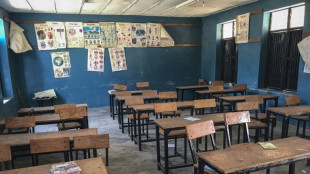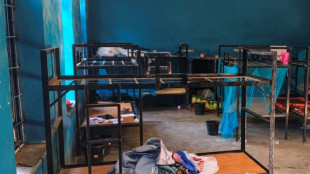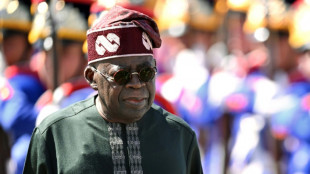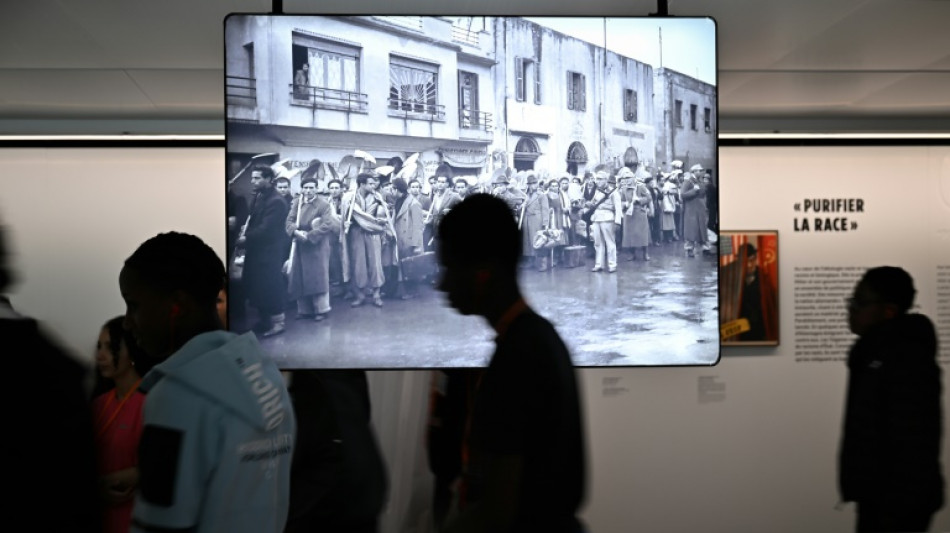
-
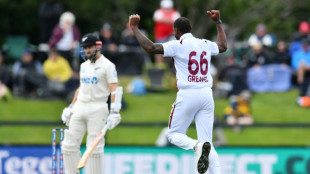 New Zealand 231-9 as 'old school' West Indies exploit pace-friendly wicket
New Zealand 231-9 as 'old school' West Indies exploit pace-friendly wicket
-
England spinner Jacks replaces injured Wood for second Ashes Test
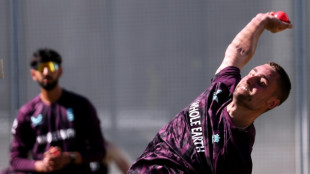
-
 Pope Leo to hold Beirut mass, visit port blast site
Pope Leo to hold Beirut mass, visit port blast site
-
Australia opener Khawaja out of second Ashes Test with injury
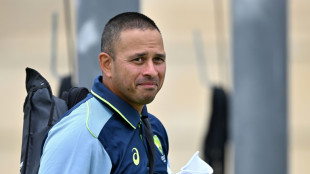
-
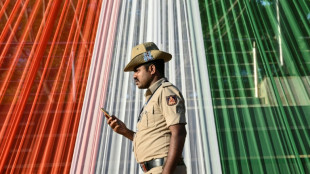 Concern as India orders phone manufacturers to preload govt app
Concern as India orders phone manufacturers to preload govt app
-
French talent Kroupi 'ready to suffer' to realise Premier League dream

-
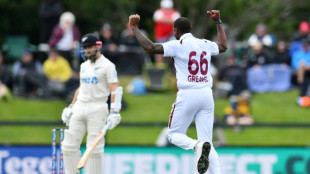 New Zealand 231-9 as West Indies exploit bowler-friendly wicket
New Zealand 231-9 as West Indies exploit bowler-friendly wicket
-
US Republicans sweat toss-up election in traditional stronghold
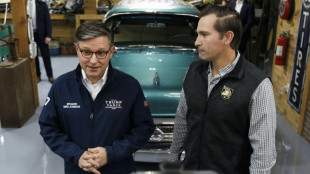
-
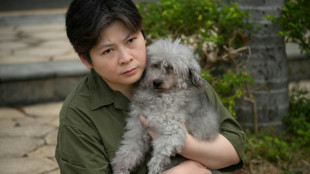 'Rescued my soul': Hong Kong firefighters save beloved pets
'Rescued my soul': Hong Kong firefighters save beloved pets
-
Suns eclipse shoddy Lakers, Mavs upset Nuggets
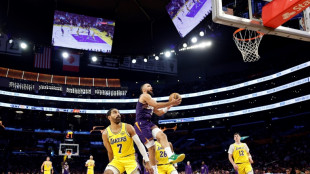
-
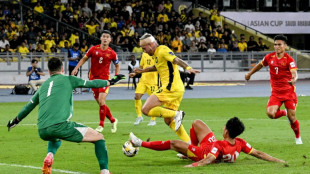 Seven footballers in Malaysia eligibility scandal 'victims': union
Seven footballers in Malaysia eligibility scandal 'victims': union
-
Patriots on brink of playoffs after Giants rout

-
 Survivors, families seek answers to deadly Hong Kong ferry disaster
Survivors, families seek answers to deadly Hong Kong ferry disaster
-
Race to get aid to Asia flood survivors as toll nears 1,200
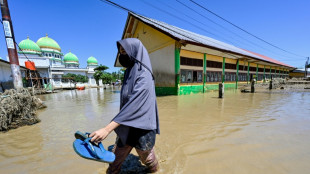
-
 Rugby World Cup draw: who, how and when?
Rugby World Cup draw: who, how and when?
-
Williamson falls for 52 as NZ reach 128-5 in West Indies Test
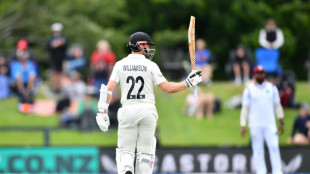
-
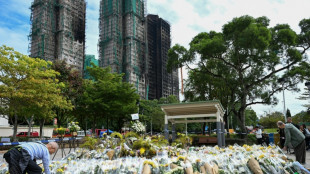 Hong Kong leader announces 'independent committee' to probe fire
Hong Kong leader announces 'independent committee' to probe fire
-
South Korean leader calls for penalties over e-commerce data leak

-
 Samsung unveils first 'special edition' triple-folding phone
Samsung unveils first 'special edition' triple-folding phone
-
Apple AI chief leaving as iPhone maker plays catch-up
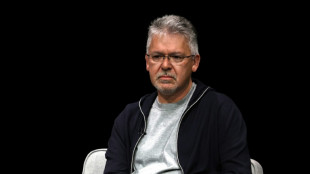
-
 Asian markets rise as US rate cut bets temper Japan bond unease
Asian markets rise as US rate cut bets temper Japan bond unease
-
Weight of history against England in pink-ball Gabba Ashes Test
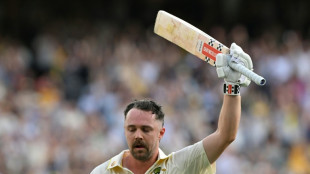
-
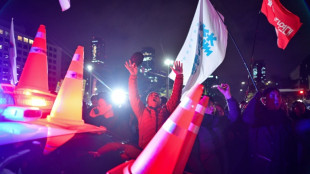 How South Korea's brief martial law upended lives
How South Korea's brief martial law upended lives
-
VR headsets take war-scarred children to world away from Gaza
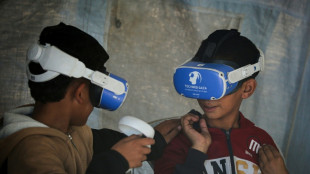
-
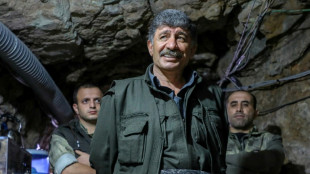 'We chose it': PKK fighters cherish life in Iraq's mountains
'We chose it': PKK fighters cherish life in Iraq's mountains
-
US envoy to meet Russia's Putin for talks on ending Ukraine war
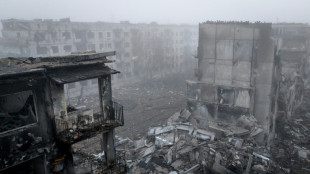
-
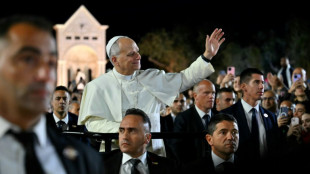 Pope Leo holds Beirut mass and visits site of port blast
Pope Leo holds Beirut mass and visits site of port blast
-
'Quad God' Malinin ramps up Olympic preparations at Grand Prix Final
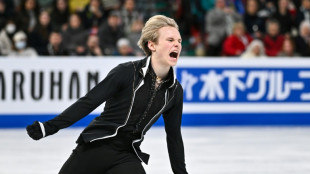
-
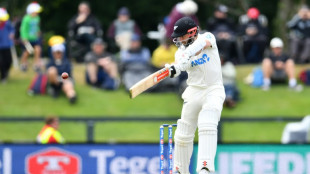 New Zealand 17-1 at lunch in rain-hit West Indies Test
New Zealand 17-1 at lunch in rain-hit West Indies Test
-
Pacific island office enabling sanctions-busting 'shadow fleets'

-
 White House gets scaled-down Christmas display amid ballroom work
White House gets scaled-down Christmas display amid ballroom work
-
GEN Announces New Positive Phase 1 Trial Data of the Investigational Drug SUL-238 for Alzheimer's and Other Neurodegenerative Diseases

-
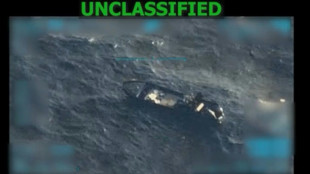 White House confirms admiral ordered 2nd strike on alleged drug boat
White House confirms admiral ordered 2nd strike on alleged drug boat
-
Nigeria's defence minister resigns amid security crisis: presidency
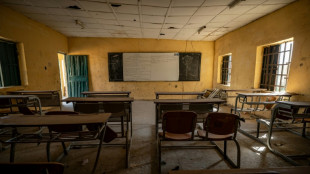
-
 From Honduras to Poland, Trump meddles in elections as never before
From Honduras to Poland, Trump meddles in elections as never before
-
Trump holds Venezuela meeting as Maduro rejects 'slave's peace'
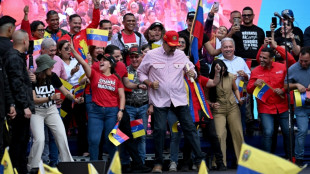
-
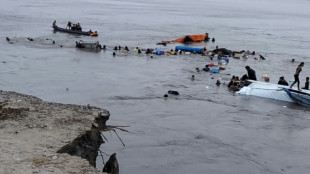 12 dead, dozens missing as landslide submerges boats in Peru port
12 dead, dozens missing as landslide submerges boats in Peru port
-
Vardy's first Serie A double fires Cremonese past high-flying Bologna
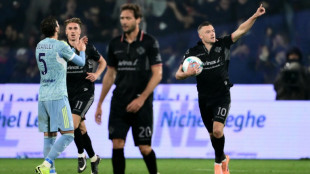
-
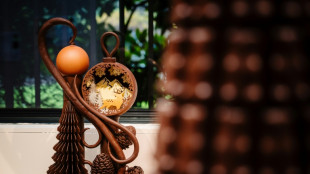 Rich art: French pastry chefs auction chocolate sculptures
Rich art: French pastry chefs auction chocolate sculptures
-
Cameroon sack coach Brys, drop goalkeeper Onana for AFCON
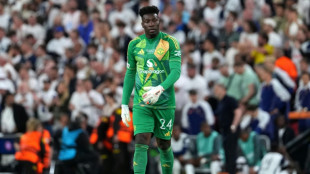
-
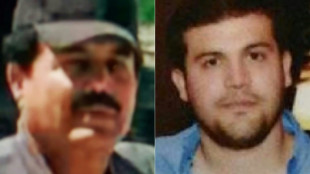 Son of Mexican crime lord 'El Chapo' pleads guilty in drug case: US media
Son of Mexican crime lord 'El Chapo' pleads guilty in drug case: US media
-
Right-wing rivals for Honduras presidency in 'technical tie'
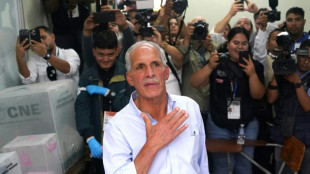
-
 US upbeat on pushing Ukraine deal as envoy heads to Russia
US upbeat on pushing Ukraine deal as envoy heads to Russia
-
European rocket puts S.Korean satellite in orbit
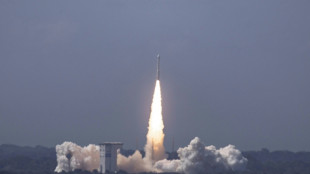
-
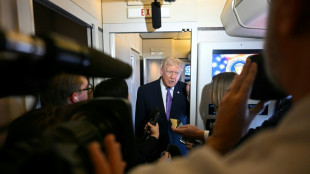 Trump to meet top national security team on Venezuela
Trump to meet top national security team on Venezuela
-
US Supreme Court hears major online music piracy case
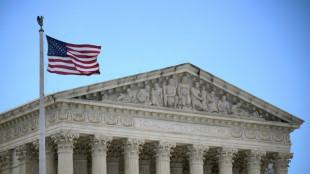
-
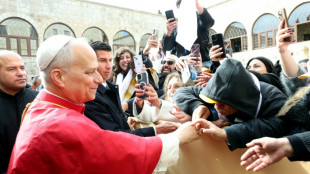 Pope gets rockstar welcome as he delivers message of hope to Lebanese youth
Pope gets rockstar welcome as he delivers message of hope to Lebanese youth
-
Iran sentences director Jafar Panahi to year in prison: lawyer
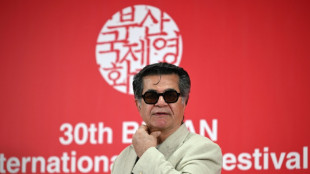
-
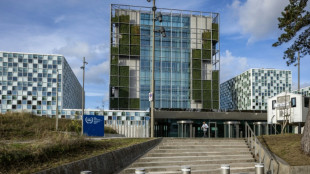 ICC vows to stand firm amid US sanctions
ICC vows to stand firm amid US sanctions
-
US to zero out tariffs on UK pharma under trade deal

| RBGPF | 1.54% | 79 | $ | |
| SCS | 0.55% | 16.38 | $ | |
| RYCEF | -2.68% | 13.83 | $ | |
| CMSC | -0.39% | 23.32 | $ | |
| GSK | -1.42% | 47.19 | $ | |
| VOD | -2.8% | 12.13 | $ | |
| RELX | -1.23% | 39.72 | $ | |
| RIO | 0.03% | 71.97 | $ | |
| NGG | -0.61% | 75.65 | $ | |
| CMSD | -0.13% | 23.29 | $ | |
| AZN | -2.44% | 90.52 | $ | |
| BCE | -0.09% | 23.49 | $ | |
| JRI | -0.15% | 13.78 | $ | |
| BCC | -1.18% | 75.13 | $ | |
| BTI | -0.91% | 58.13 | $ | |
| BP | 1.12% | 36.51 | $ |

Museums rethink how the Holocaust should be shown
Historians are rethinking the way the Holocaust is being presented in museums as the world marks the 80th anniversary of the liberation of the last Nazi concentration camps this month.
Shocking images of the mass killings of Jews were "used massively at the end of World War II to show the violence of the Nazis," historian Tal Bruttmann, a specialist on the Holocaust, told AFP.
But in doing so "we kind of lost sight of the fact that is not normal to show" such graphic scenes of mass murder, of people being humiliated and dehumanised, he said.
Up to this year, visitors to the Memorial de Caen war museum in northern France were plunged into darkened rooms with life-sized photographs showing the horror of what happened in the camps and the mass executions earlier in the war.
"The previous generation of Holocaust museums used these images because it reinforces the horror," said James Bulgin, who is in charge of the Holocaust galleries at London's Imperial War Museum.
The difficulty with that is that it "denies the people within the images any capacity for agency or respect or identity," he added.
"The other problem with Holocaust narratives is that they tend to relate the history of what the Nazis and their collaborators did, not what Jewish people experienced," argued the British historian.
Some six million were murdered in the Nazi's attempt to wipe out European Jews.
- 'No photos of killings' -
Which is why "there are no photographs of killings" in the new, "almost clinically white" galleries dedicated to the Shoah at the Memorial de Caen, said Bruttmann, the scientific adviser on the project which opened this month.
"To show this absolute negation of human beings, there is no obligation to show images of such unprecedented violence," said the memorial's director Kleber Arhoul.
Historians at the Imperial War Museum had the same debate, but drew different conclusions.
They decided to still use graphic imagery. "The images exist as part of the historical record, we can't suppress their existence," said Bulgin. "But what we can do is meaningfully integrate them into the historical narrative."
He said they did consider not using them but felt it could lead to misinformation. "All of that stuff exists on YouTube and Vimeo... but without us mediating it, shaping it, informing it, giving it context," he added.
The curator said they "spoke to an enormous range" of Jewish groups and the "almost overwhelming consensus was that we should use the footage".
However, graphic images of the genocide are shown in smaller formats, often on panels that carry a warning and that you have to turn over to see. Distinctions are also made between photos taken by Jews themselves and those taken by the Nazis in the Warsaw ghetto.
Israeli historian Robert Rozett argued that "we need these memorials to be aware of what human beings are capable of, and where open hatred can lead."
At the Yad Vashem memorial in Jerusalem, "there are pictures that show mass executions. They are not gigantic but they are there," he said.
"The hardest pictures are not highlighted in any way," he said. For example, those showing the massacre of Babi Yar, near Kyiv, in 1941 do not show the moment of the killings but the aftermath. And those of the mass graves do not show the bodies but the clothes of the victims strewn on the ground.
- 'You want them to identify' -
Museums have also tended to concentrate on representing the ruthless, systematic efficiency of the Nazi death machine, experts say.
The first Holocaust memorials were "dark, oppressive spaces with a highly industrialised architecture that very much centres on Auschwitz," Bulgin said.
That was "enormously problematic and potentially slightly dangerous, because it has none of the human character that actually allowed it to happen."
Which is why the London museum has tried to concentrate on this being a genocide "done by people, to people", he said.
The new galleries in the Memorial de Caen have two distinct rooms. One on death camps like Auschwitz, the mass executions of the "Holocaust by bullets" and the mobile gas vans. The other deals with the concentration and work camps where prisoners were enslaved, brutalised and worked to death or died from hunger or disease.
But museums also have a duty to evoke the Jewish communities that were wiped out, Rozett insisted. "If you're teaching the Holocaust, you have to talk about what happened before, about what was destroyed," he said.
The first Holocaust room at the Imperial War Museum addresses this by showing a film called "The Presence of Absence". At Yad Vashem, the visit begins with a sound and light show to draw people deep into those lost worlds.
"When you're teaching, you want somebody's mind and their heart," it says. "You want them to identify. It's not enough just intellectual engagement. There has to be something emotional, but not overriding emotional."
L.Stucki--VB


